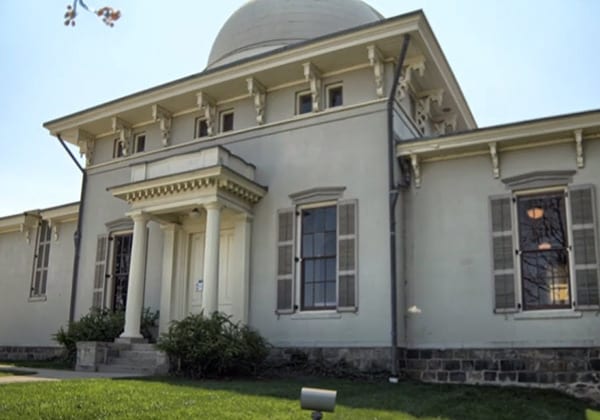
Detroit Public TV
An Eye for Science
The Detroit Observatory is front and center in episode two of the documentary series An Uncommon Education: Celebrating 200 Years of the University of Michigan produced by Detroit Public TV.
Detroit Observatory Historical Timeline

1852
Henry Philip Tappan becomes U-M's first president in Ann Arbor, collaborates with Henry Walker of Detroit to raise funds for an observatory.
1850

1853
Construction of Observatory begins.
1853
Tappan orders a 12.5" refracting telescope from Henry Fitz of New York.
1853
Tappan meets astronomers Johann Encke and Franz Brünnow at the Royal Observatory in Berlin. Brünnow agrees to oversee manufacture of a meridian circle telescope on Tappan's behalf.
1853
Tappan orders a 6" meridian circle telescope from the firm of Pistor & Martins of Berlin.

1854
Franz Brünnow is appointed first Observatory director.

1854
Observatory building is completed.
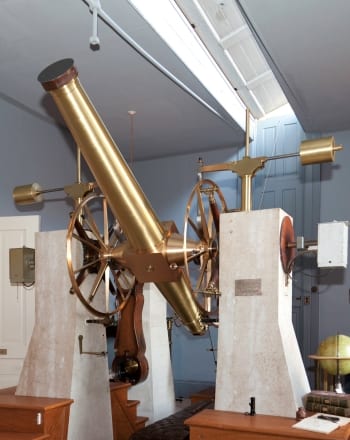
1854
Meridian circle telescope and Tiede sidereal clock are installed.
1855
Jasper Cropsey, Hudson River painter, visits campus at Tappan's invitation and paints the Observatory and a campus landscape.
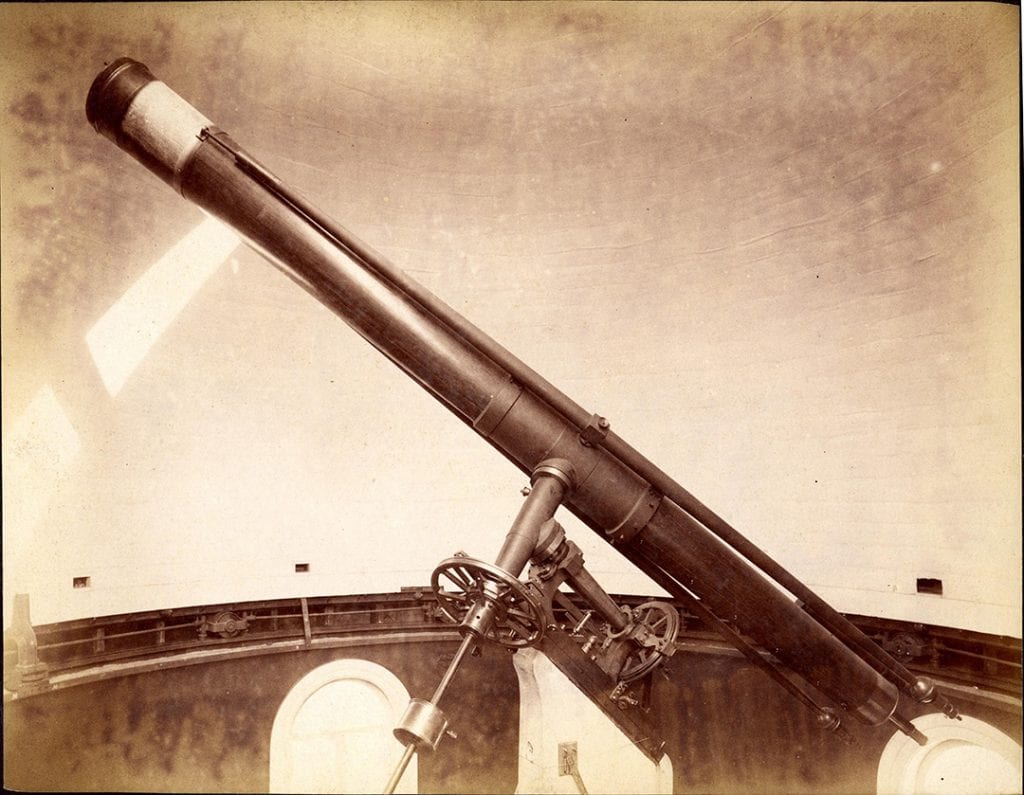
1857
Following delivery of a defective Fitz telescope and use of a telescope on loan, the new Fitz refracting telescope — the current one — is installed in the dome.
1857
Franz Brünnow and Rebecca Tappan marry.

1857
James Craig Watson, Brünnow's star student, graduates.

1858
Brünnow begins publication of 'Astronomical Notices,' U-M's first scholarly publication.
1859
Brünnow accepts appointment at the Dudley Observatory in Albany, NY. James Craig Watson becomes acting director.
1860
Brünnow returns to the University of Michigan, at the request of the Regents.
1860
Franz Brünnow publishes his English translation of Part 1 of his magnum opus, Lehrbuch der spärischen Astronomie (Handbook of Spherical Astronomy). It will be a widely-used astronomy text for decades to come.
1861
Longitude of Detroit Observatory is established, via telegraphic connection and joint observations with Hamilton College observatory.

1863
Observatory time service begins this year.
1863
Tappan is dismissed by Regents; Brünnow resigns; James Craig Watson becomes Observatory's second director.
1863
Watson discovers his first asteroid, 79 Eurynome. Over the next 15 years, he will discover 21 more — out of 100 discovered worldwide during that period.
1865
Brünnow is appointed Astronomer Royal at the Dunsink Observatory in Ireland.
1867
Watson discovers asteroids 93 Minerva and 94 Aurora.
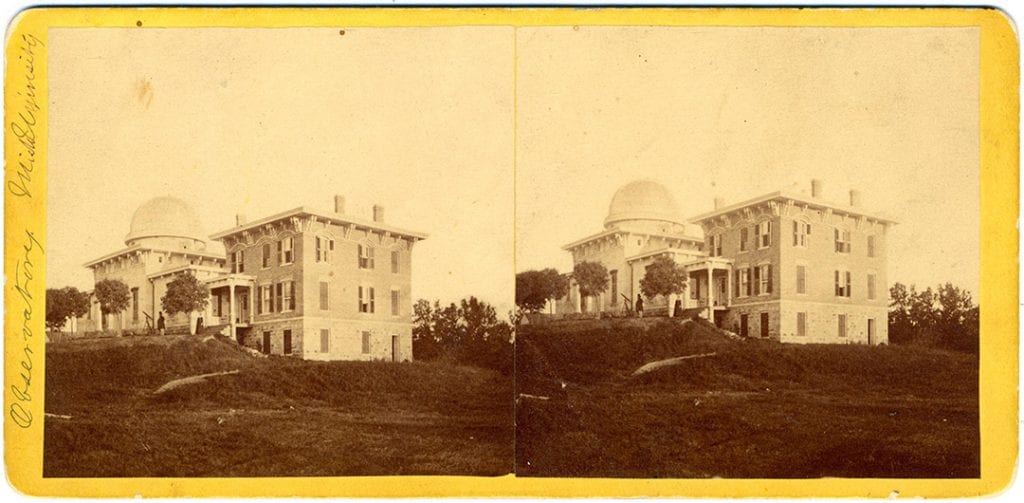
1868
A director's residence is added to the west side of the Observatory, connected via the director's office in the west wing. City of Ann Arbor improves roads around the Observatory.
1868
Watson discovers an unprecedented six asteroids: 100 Hekate, 101 Helena, 103 Hera, 104 Klymene, 105 Artemis, 106 Dione.
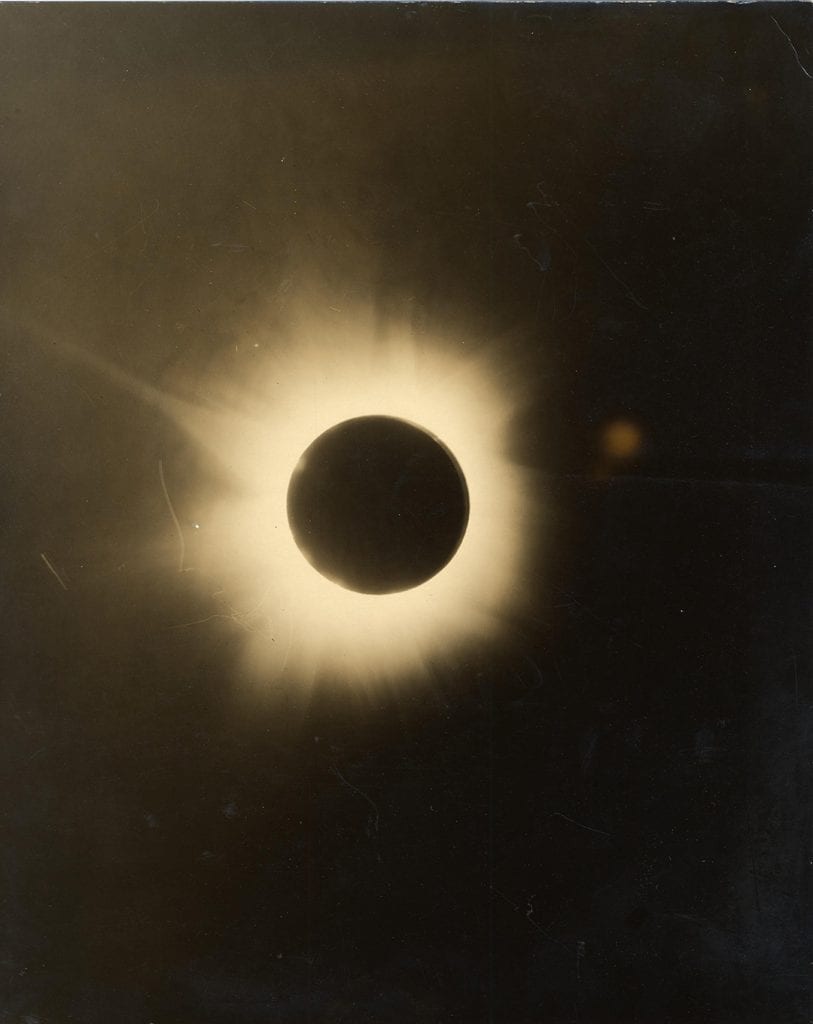
1869
Watson observes total solar eclipse in Iowa
1870
Watson works on Washington Zone astronomical observations for the U.S. Coastal Survey and also observes a solar eclipse in Sicily.
1871
Watson discovers 115 Thyra.
1872
Watson discovers 119 Althaea, 121 Hermione, 128 Nemesis.
1873
Watson discovers 132 Aethra, 133 Cyrene.
1874
Watson, in China for the transit of Venus, discovers 139 Juewa, allowing his Chinese hosts to name it. It is reportedly the first asteroid discovery in China.
1875
Watson discovers 150 Nuwa.
1875
1876
Watson discovers 161 Athor and 168 Sibylla .

1877
Watson discovers 174 Phaedra, 175 Andromache, and 179 Klytaemnestra, concluding his remarkable run of discoveries.

1878
U.S. Government station set up on Observatory grounds to observe transit of Mercury; it then becomes the first Student Observatory.

1878
Mary Byrd graduates from the University of Michigan. She would go on to become the first director of the Smith College Observatory and inspire generations of future female astronomers, including Harriet Williams Bigelow.
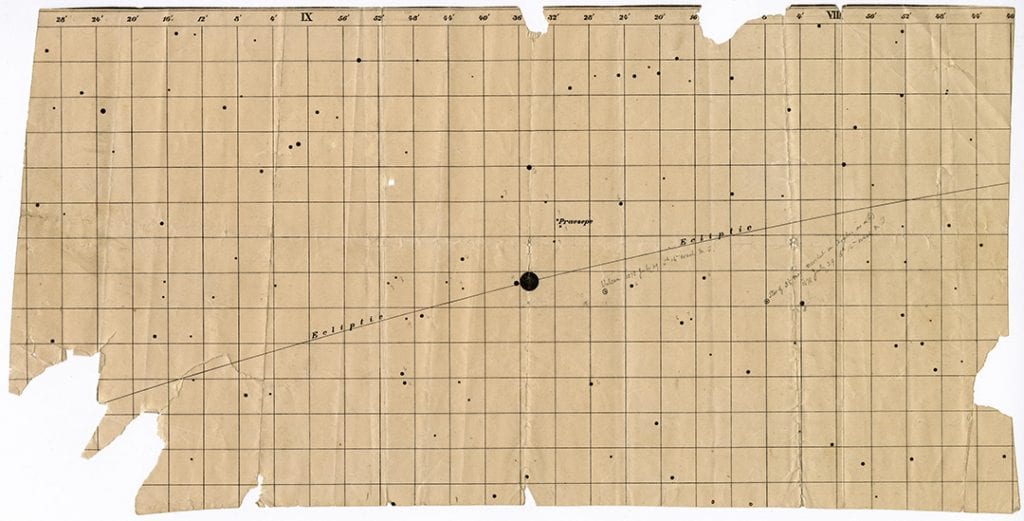
1878
Watson claims to have discovered Planet Vulcan while observing a total solar eclipse in Wyoming.
1879
Watson leaves U-M to become director of the new Washburn Observatory at University of Wisconsin-Madison. His student Mark W. Harrington is named director.

1880
Student observatory is outfitted with new telescopes, including the 3" transit telescope by Fauth & Co with Clark optics, still in the Observatory's collection.

1880
Assistant director J.M. Schaeberle discovers a comet, 1880 II.

1881
The Observatory's 3rd director, Mark Harrington, begins meterological observations at the Observatory.
1881
Schaeberle discovers another comet, 1881 IV.
1884
Harrington founds 'American Meteorological Journal.'
1890
Dome is converted: new shutter, dome cannon-ball rollers replaced with railroad-style track and wheels.
1891
Harrington becomes first Chief of the U.S. Weather Bureau.

1904
Harriet Williams Bigelow becomes the first woman to receive a Ph.D. in astronomy from Michigan. She goes on to become a leading astronomer until her untimely death in 1934.
1900

1905
William J. Hussey is appointed director. He begins to rebuild the U-M astronomy program, which had fallen behind the times in the previous two decades.

1907
Fitz telescope is converted to steel tube; new mount; drive clock added.
1908
Student Observatory moves to the west side of the Observatory.

1908
Large 1908 addition is constructed on the east side of the Observatory.
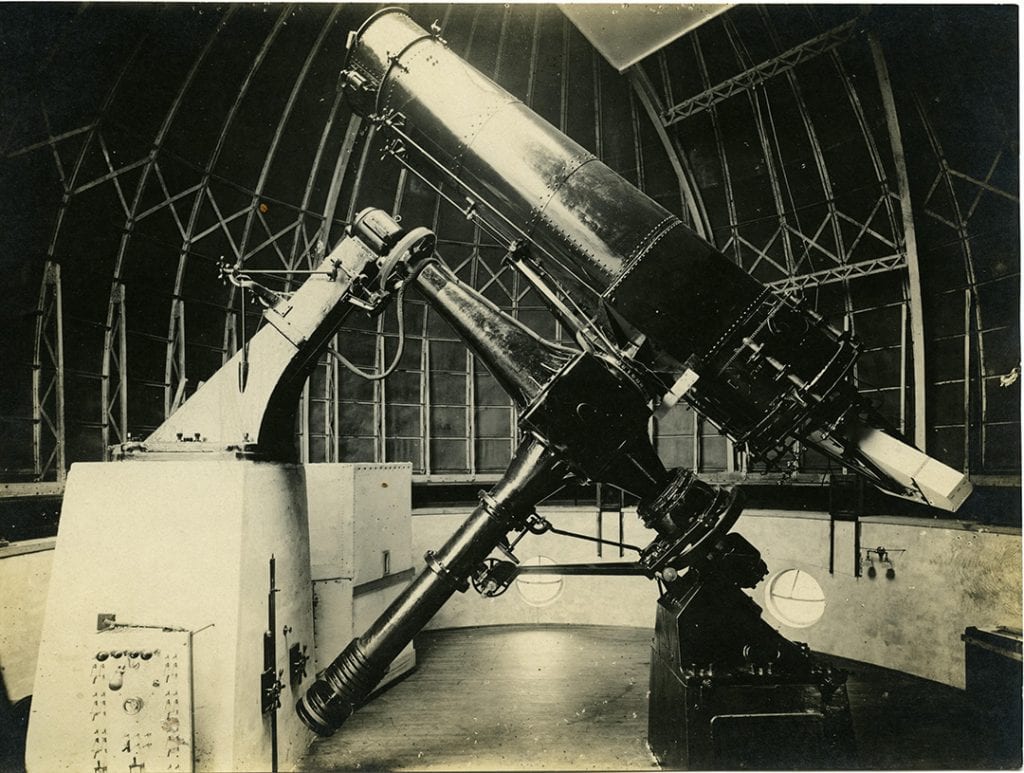
1911
37-1/2" reflecting telescope is completed and installed in dome of 1908 addition.
1911
In an effort to ward off encroaching development, the Observatory grounds are expanded to the east by a gift of 26 acres from R.P. Lamont (Eng 1861).
1912
The series Publications of the Observatory of the University of Michigan is launched.

1912
The University develops plans to construct a coal-fired power plant to the west of the Observatory. Concerned about the impact of pollution on observing, Hussey explores moving the Observatory to Huddy Hill, about 3/4-mile southeast. The power plant is eventually completed in 1924, but the Observatory never moves.
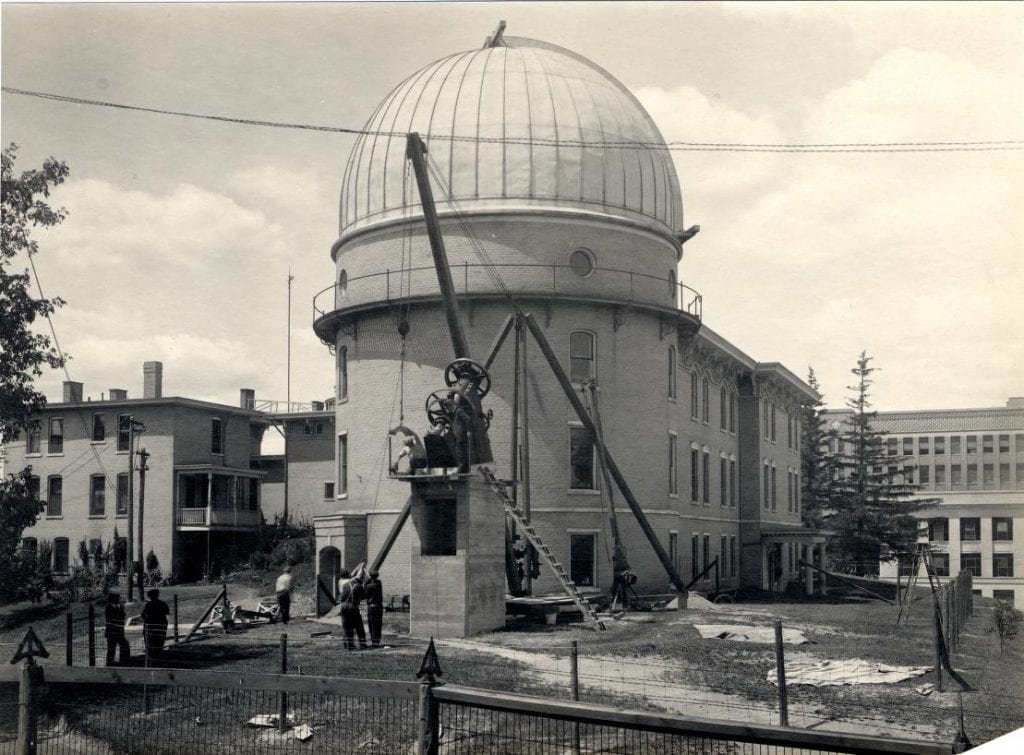
1925
A 27-inch refractor, named for R.P. Lamont, is completed and tested at the Observatory. Seeking darker and less polluted skies, Hussey will take the refractor to a new U-M observatory in South Africa. Unfortunately, he dies in transit.
1925
1927
Student Observatory moves to the roof of Angell Hall.
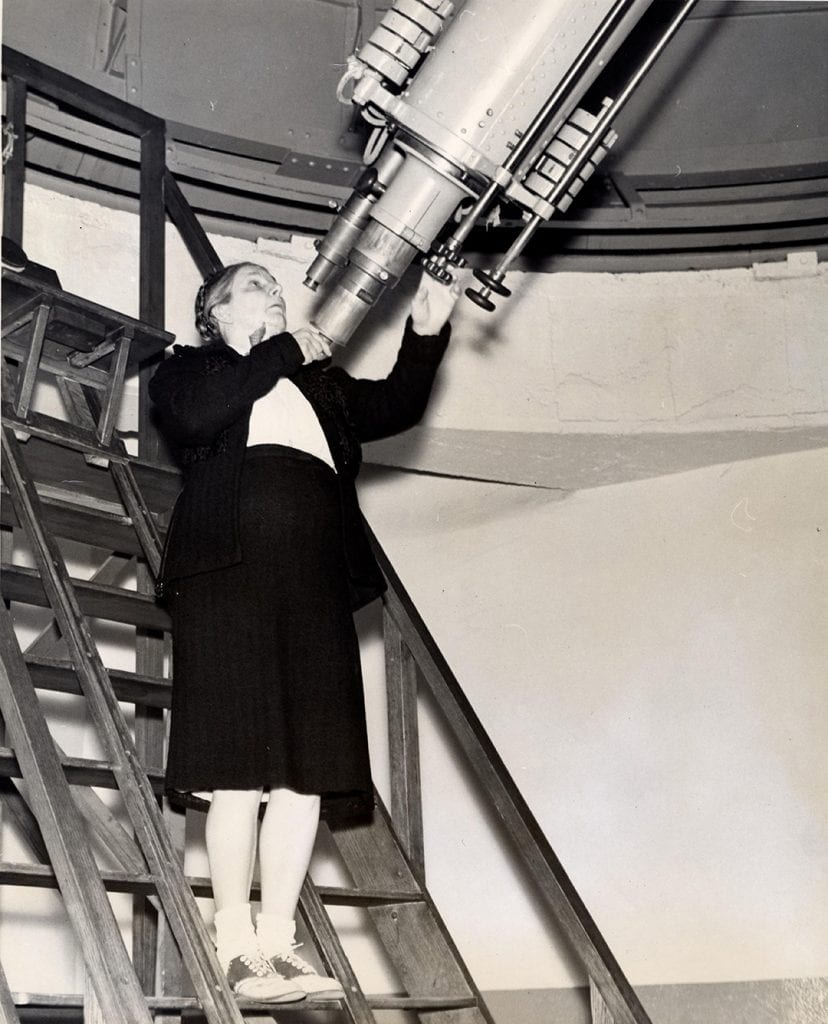
1927
Hazel "Doc" Losh joins Astronomy faculty.
1928
U-M's Lamont-Hussey Observatory in South Africa, with 27-inch refractor, is dedicated.

1930
Heber Curtis, protagonist in "The Great Debate," named director.

1930
McMath-Hulbert Observatory is established by amateur astronomers at Lake Angelus, Michigan. Later, a partnership with U-M is formed.
1932
Robert McMath takes first films of the sun, establishing heliokinematography as a new field of astronomy.
1954
Director's residence is torn down to make room for Couzens Hall expansion
1950
1965
The Astronomy Department moves from the Observatory to new quarters in the Dennison Building

1970
U-M proposes to raze Observatory but Friends of the Observatory are successful in protecting it.
1973
The Observatory is listed on the National Register of Historic Places

1976
1908 addition is condemned and razed but the 1854 building is preserved
1975
1994
Proposal for restoration of the Observatory is developed, and Observatory is transferred to Office of the Vice President for Research.

1997
Restoration is completed.
2005
The Observatory is transferred to the Bentley Historical Library.
2000
2009
Public viewing nights begin.
2018
Regents approve addition.
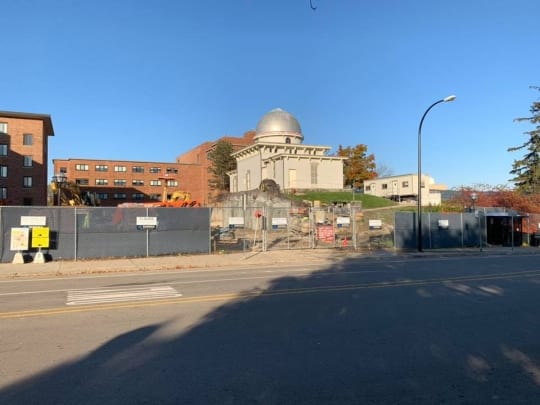
2019
Construction of addition begins.

2022
Observatory re-opens with new addition and renamed the Judy and Stanley Frankel Detroit Observatory.
Popular Articles and Videos

Detroit Public TV
An Eye for Science
The Detroit Observatory is front and center in episode two of the documentary series An Uncommon Education: Celebrating 200 Years of the University of Michigan produced by Detroit Public TV.
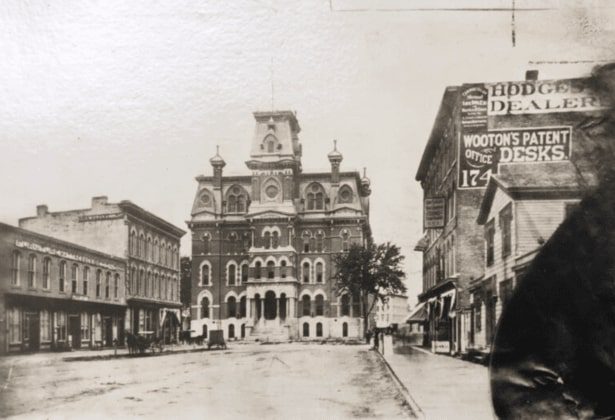
Bentley Historical Library
What Time Is It Now?
Trains crashing. People dying. Businesses struggling. The perils of keeping incorrect time in Detroit were significant, and the city desperately needed a solution. A visionary academic, a knowledge-loving businessman, and new technology to plot the stars would converge on a small hill at U-M, changing Detroit—and the campus—forever.
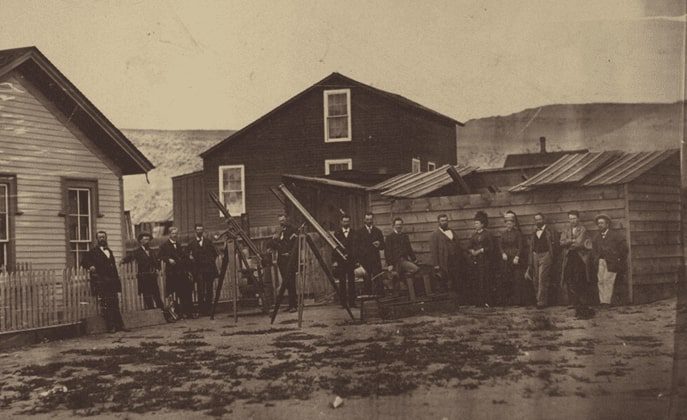
Bentley Historical Library
Total Eclipse of the Sun
James Craig Watson was an astronomical genius, becoming the second director of the Detroit Observatory at the young age of 25. In the summer of 1878, he headed west to observe a solar eclipse, confident he would find a new planet. The story of his quest—preserved in his papers at the Bentley—reveals the challenges of science in the late-1800s and the fine line separating fascination and folly.
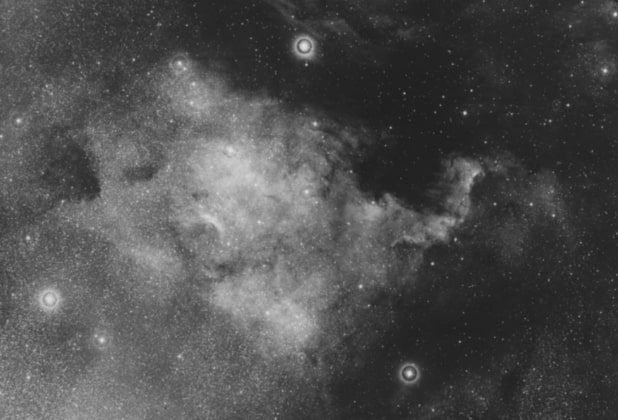
Bentley Historical Library
The Great Debate
What is the universe? How big is it? What is our place in it? Astronomers have been trying to answer these questions for centuries, from Aristotle to Ptolemy to Copernicus.

Detroit Observatory
Seeing Anew Symposium
We are thrilled to celebrate the re-opening of U-M’s historic Judy and Stanley Frankel Detroit Observatory! In this series of virtual panels, we explored the history of the Observatory, its impact on American astronomy, and the new educational potential that it has as a result of the new addition generously funded by the Frankels.
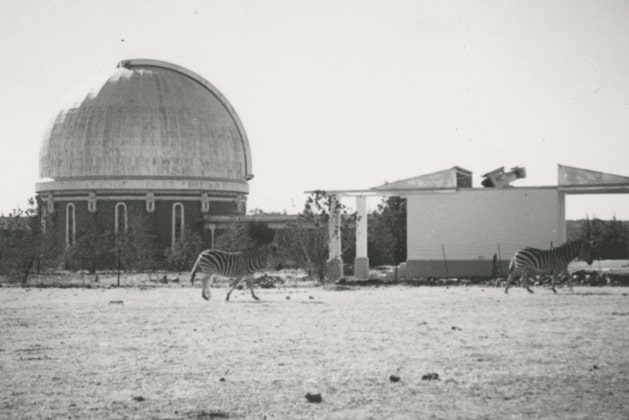
Bentley Historical Library
Between the Stars and the Sea
In the early 1900s, a determined professor of astronomy undertook the ambitious quest to build a new observatory abroad when U-M’s own observatory in Ann Arbor was threatened by a coal power plant. The result was an observatory in South Africa with U-M ties and a fascinating legacy.

Bentley Historical Library
Written in the Stars
Plans for a new Detroit Observatory renovation bring the campus’s second-oldest building into the 21st century. Read more about what's in store for a campus icon.
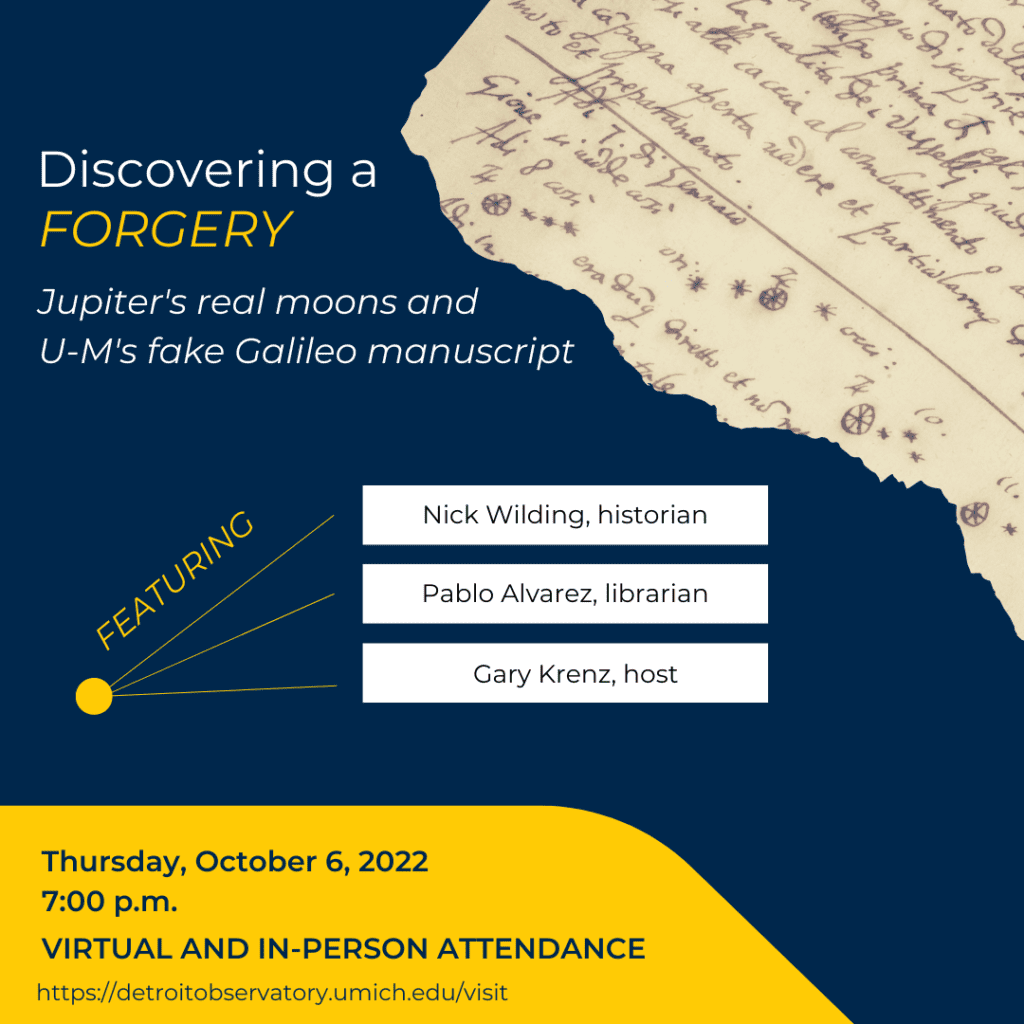
Bentley Historical Library
Discovering a Forgery: Jupiter’s real moons and U-M’s fake Galileo manuscript
A discussion with historian Nicholas Wilding and U-M Librarian Pablo Alvarez of the purported significance of the Galileo Manuscript, how its authenticity came to be questioned, and what went into the determination that it was a fake.

AADL
Stars Rising: Why the Detroit Observatory Matters
The Detroit Observatory had a seminal impact on American astronomy. Observatory director Gary Krenz speaks about it at the Ann Arbor District Library.

Heritage
A Creation of My Own
U-M President Henry Phillip Tappan had bold ideas about what it would take to create a modern research university. The Detroit Observatory was the cornerstone of his vision.
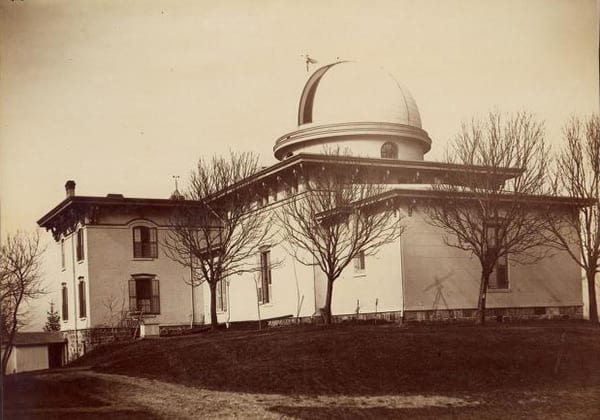
Bentley Historical Library
The Fault in His Stars
Mark Harrington was a brilliant botanist, meteorologist, and director of the Detroit Observatory. His tragic battle with mental illness would drive him across oceans, to flop houses and sugar plantations, and eventually to an East Coast asylum.
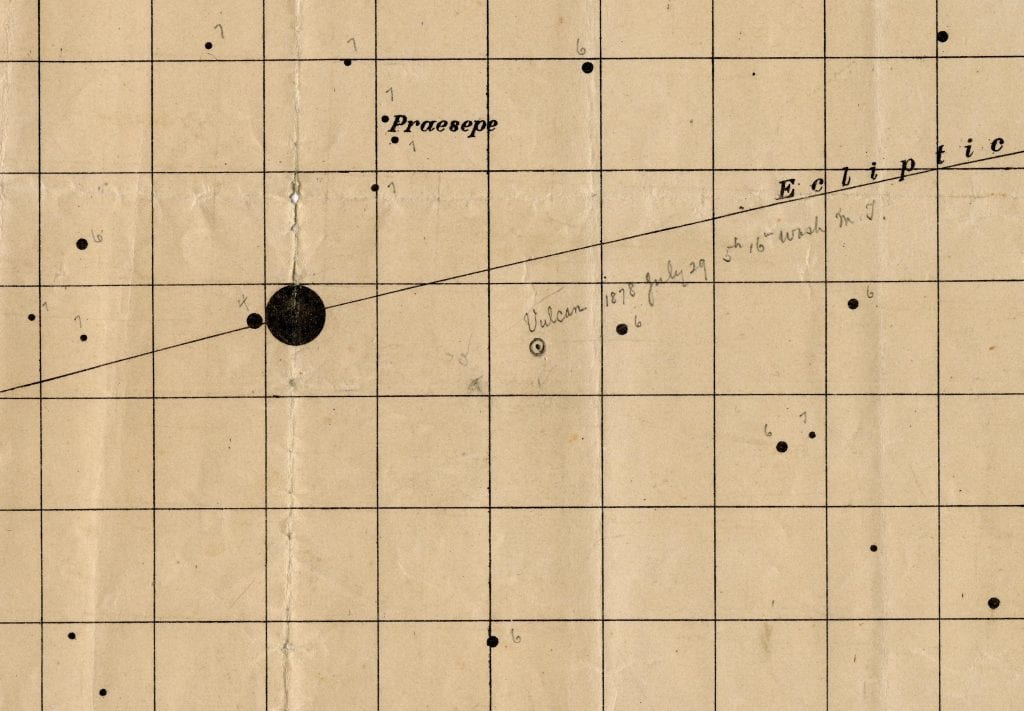
Heritage
Vulcan’s Muddy Light
James Craig Watson, one of the most renowned astronomers of his era, dedicated himself to discovering one of the most elusive objects of the 19th century -- the planet Vulcan. Did he succeed?

Michigan Radio
The Detroit Observatory and How it Shaped the Michigan Community
The Detroit Observatory represents a three-dimensional archive of University of Michigan history. It came under the direction of the Bentley Historical Library in 2004.
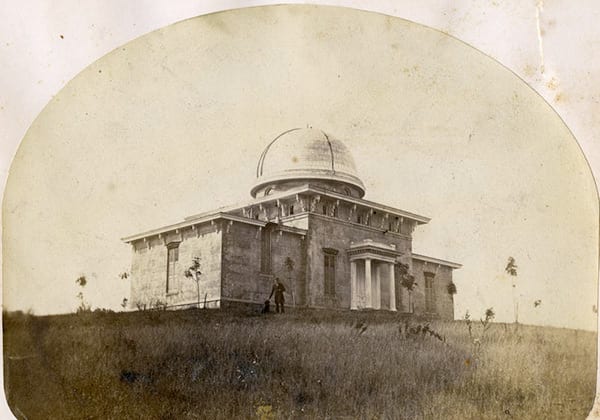
WEMU
Hidden in Plain Sight
89-1 WEMU’s Jorge Avellan reports on how the Detroit Observatory has stood on U-M's campus for more than a century, and is still chock full of surprises (and history) for visitors.

Bentley Historical Library
The Battle for the Heavens
When U-M decided to build a coal power plant to fuel a growing campus, faculty doing research at the Detroit Observatory waged a desperate fight to keep the skies clear of black smoke.
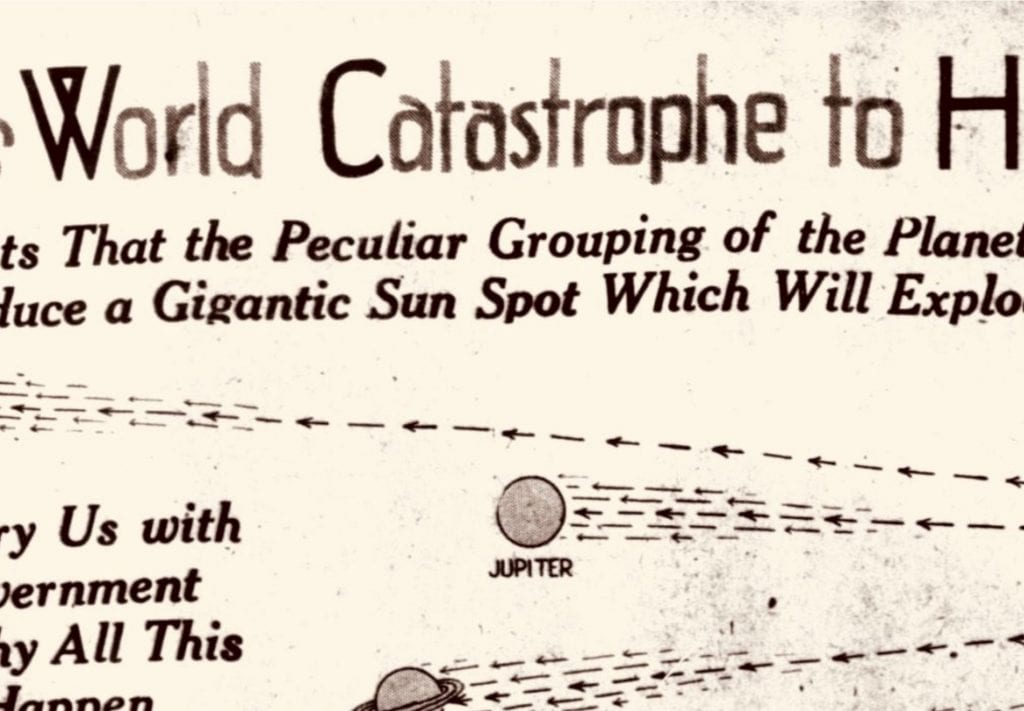
Heritage
Professor Porta’s Predictions
In an odd twist of fate -- and early 20th-century fake news -- the efforts by Detroit Observatory director William Hussey to debunk the catastrophic predictions of a second-rate astronomer perhaps helped wrongly link that astronomer with U-M in the public's mind.

The Michigan Daily
Detroit Observatory celebrates reopening after three years
Revisit the Observatory's reopening back in April! The night was full of tours, educational sessions, and demonstrations.
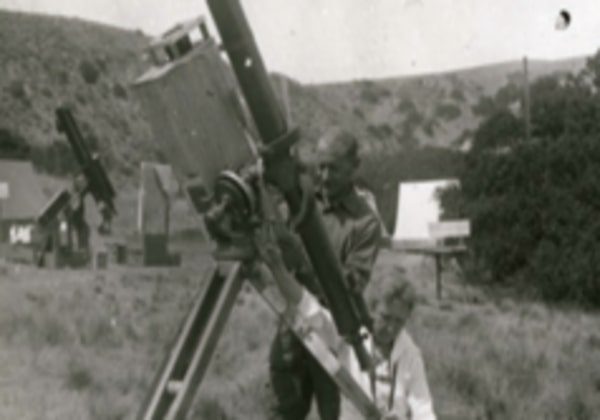
Bentley Historical Library
Reaching for the Stars
Explore the backstories and legacies of four women at U-M who pioneered new ways of looking beyond the "man's world" and into space.

WDIV-TV
From the Vault: Detroit observatory reopens at University of Michigan (WDIV segment)
A segment by meteorologist Paul Gross of WDIV-TV in Detroit, covering the rededication ceremony following restoration of the original observatory, with some history included.
Observatory History in Depth
The Detroit Observatory and American Astronomy
downloadTimekeeping and the Detroit Observatory
downloadTransits, Eclipses, and Missing Planets
downloadComets and the Detroit Observatory
downloadThe California-Michigan Axis: Lick Observatory and the Revitalization of the Detroit Observatory
downloadThe Detroit Observatory and Meteorology
downloadThe Detroit Observatory and the History of Telescopes
downloadThe Donors to the Observatory
downloadA creation of his own : Tappan’s Detroit Observatory
download“Astronomy.” The University of Michigan, An Encyclopedic Survey
downloadA detailed chronology of the Detroit Observatory (Whitesell)
downloadPublications about the Detroit Observatory
downloadPublications by Astronomers at Detroit Observatory
downloadPublications by Astronomers after leaving the Detroit Observatory
downloadCitations of Work at the Detroit Observatory
downloadThe Detroit Observatory and the U.S. Lakes Survey
downloadDetroit Observatory: Nineteenth-Century Training Ground for Astronomers
downloadUniversity of Michigan Undergraduates and the Detroit Observatory, 1855-1954
download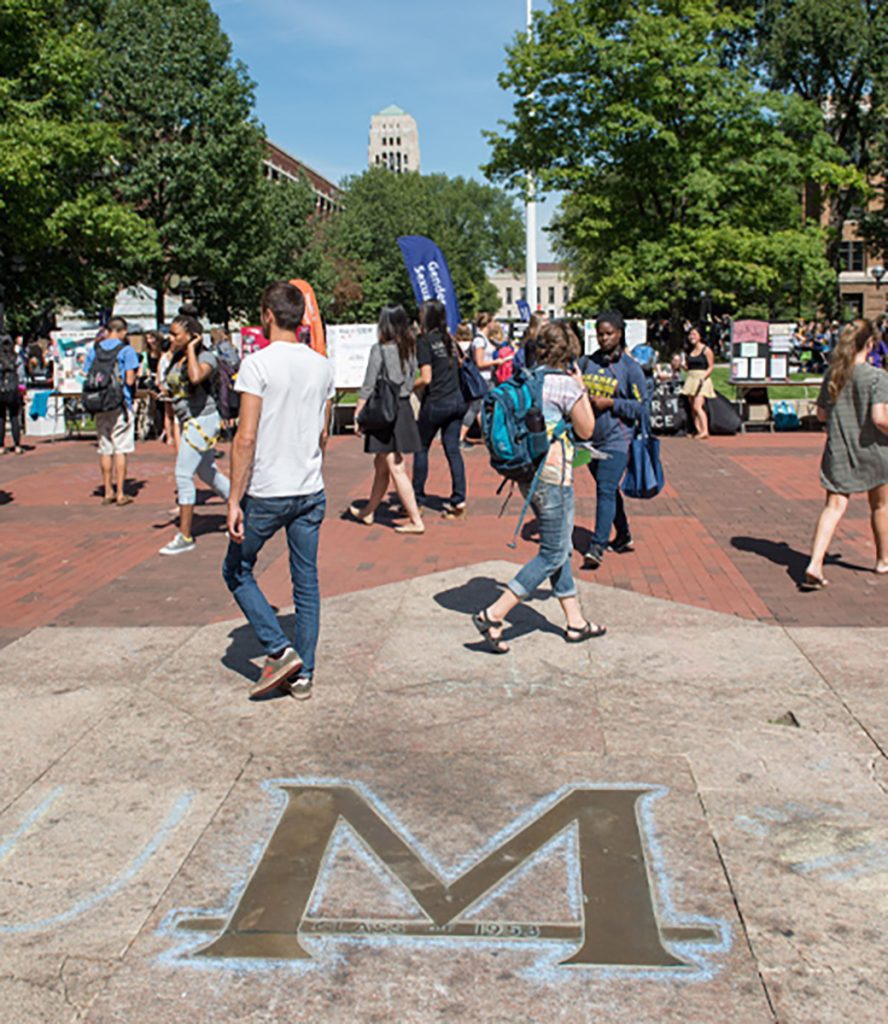
Visit the History of U-M website, which serves as a doorway to historical resources across the University that showcase 200 years of transformation.